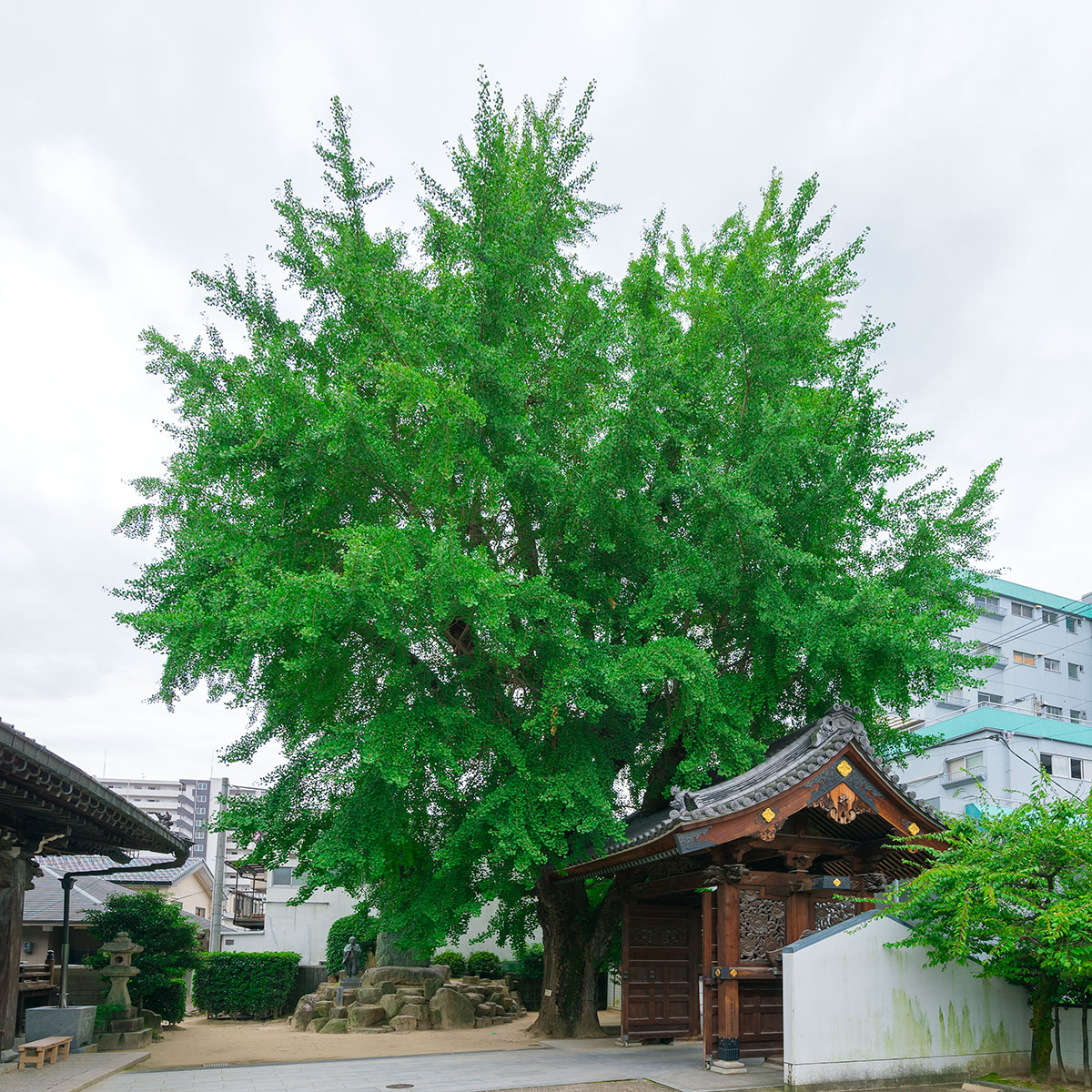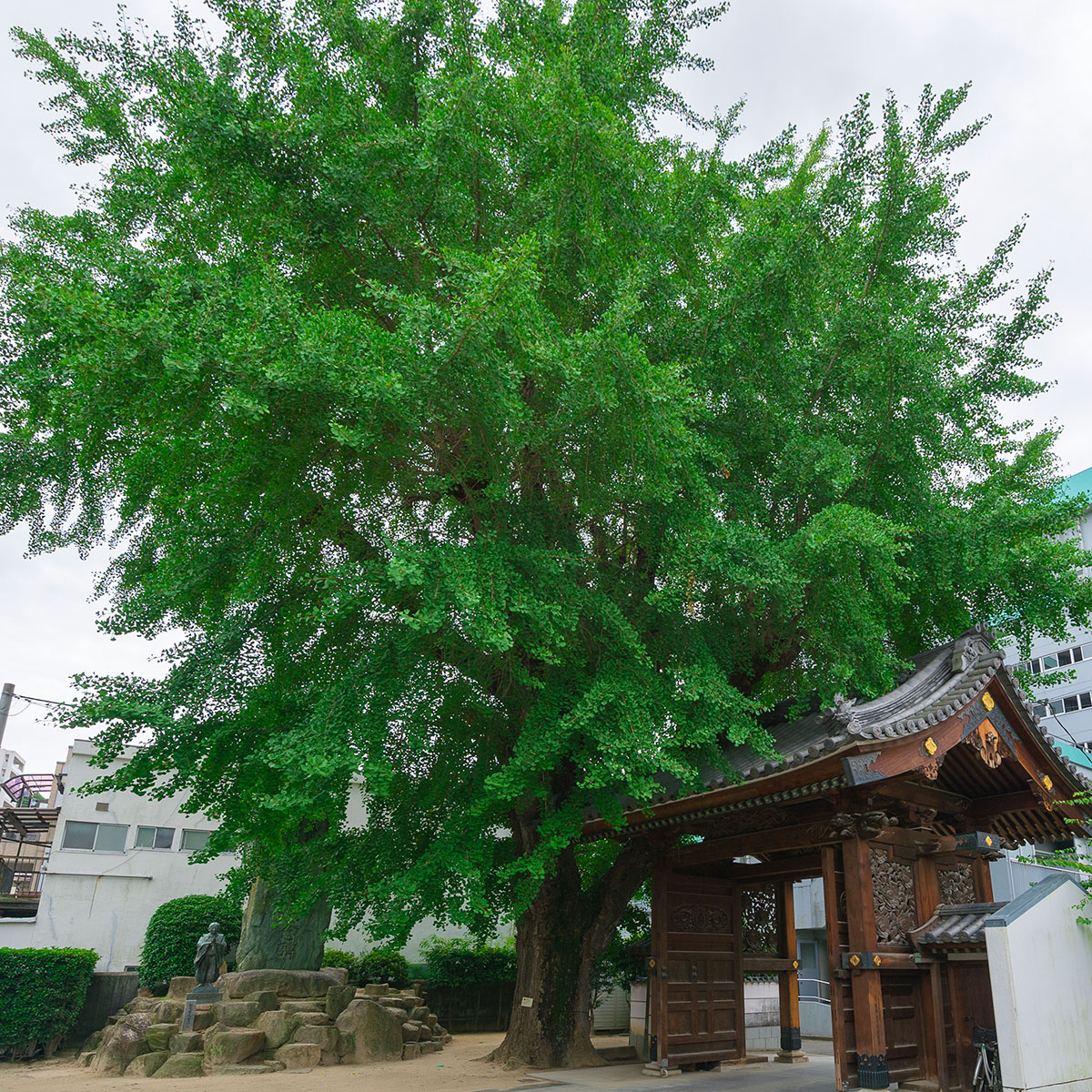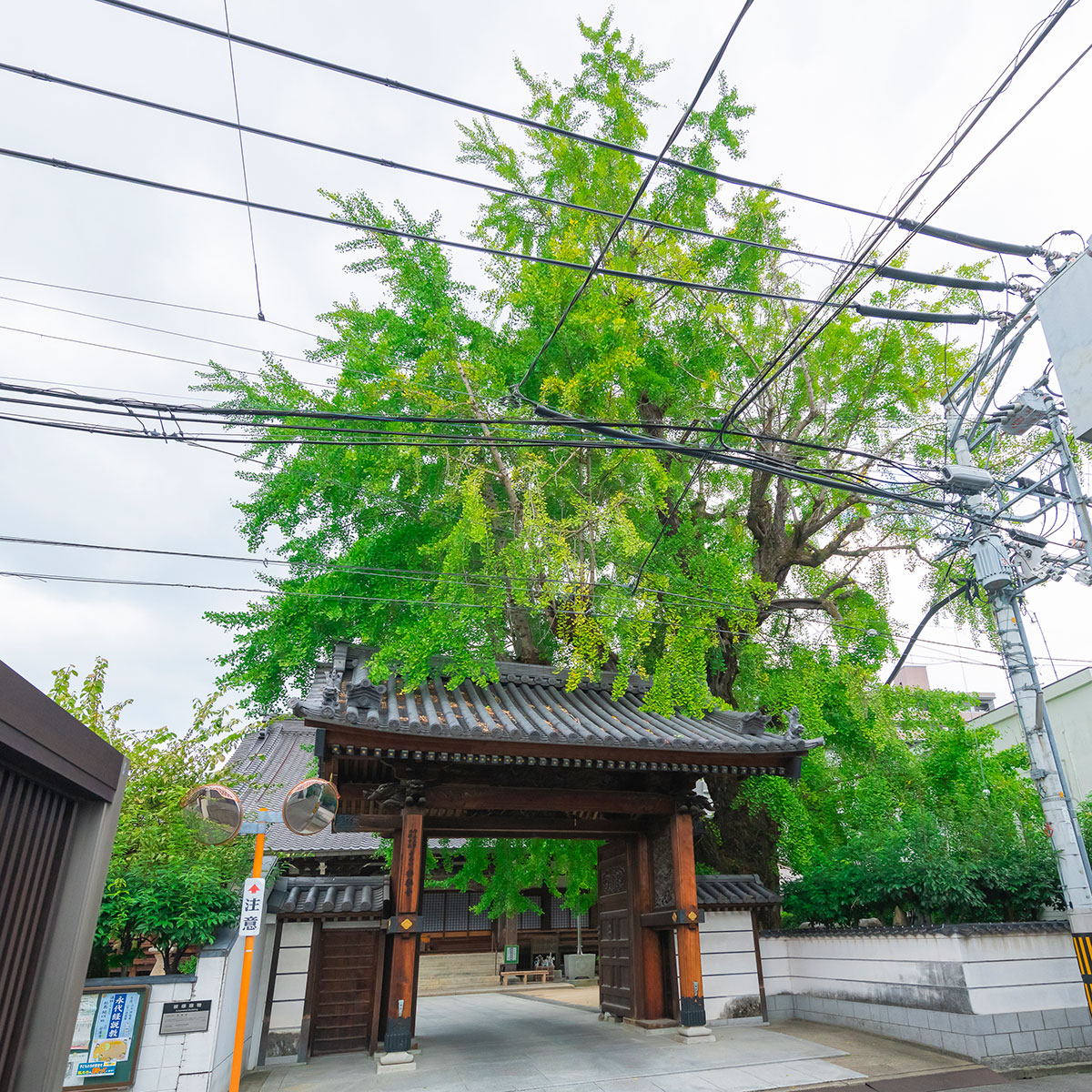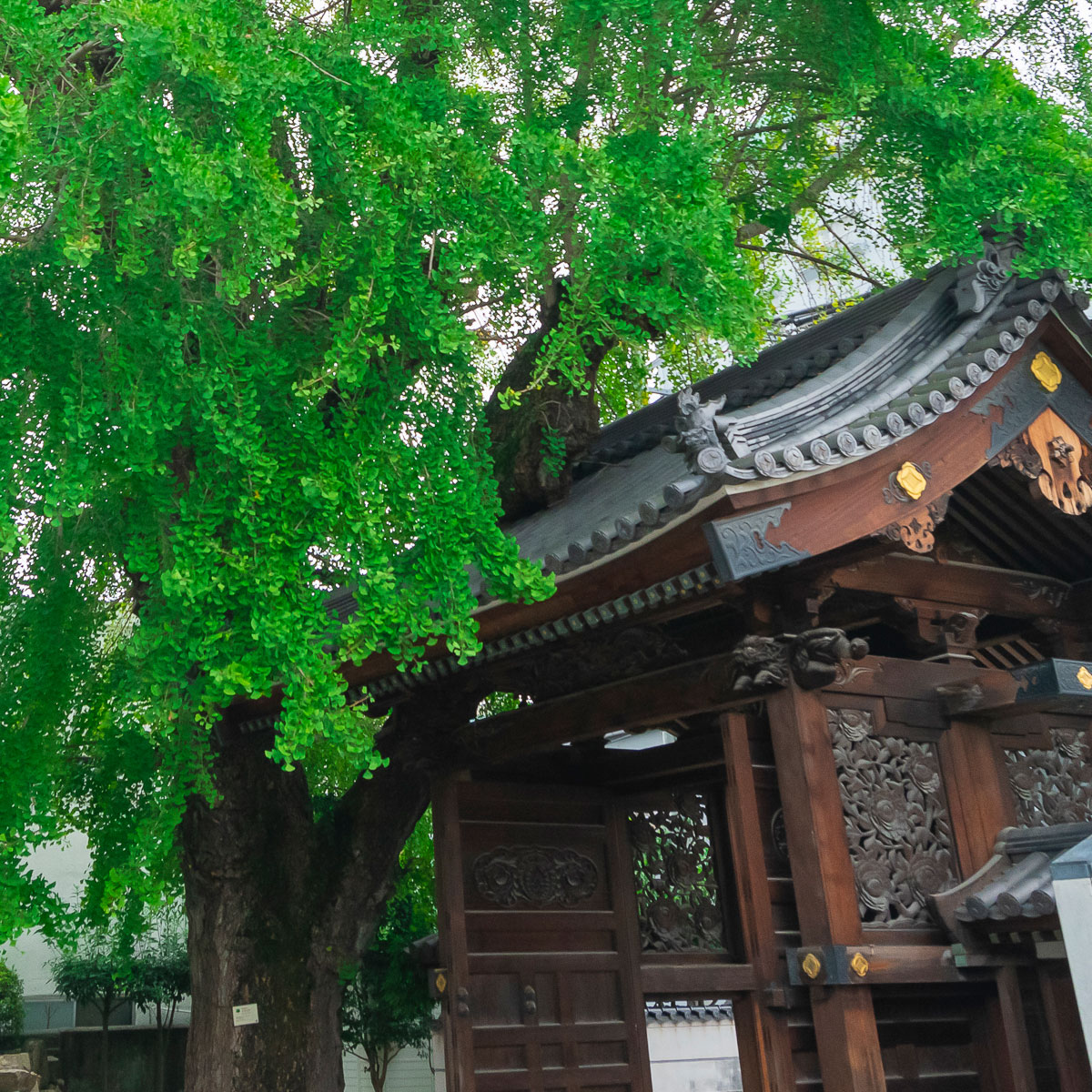安楽寺(あんらくじ)の山門の屋根をくり抜いて、守られている被爆イチョウ。原爆が投下された当時、15歳だった前住職は、動員学徒として爆心地から4kmの機械工場で働いているときに被爆しました。黒い雨を浴びながら必死に寺まで戻ると、イチョウがくすぶり、白い煙をあげていたそうです。葉っぱは1枚もなく、まっ黒に焦げた枝が折れて落ちていました。翌年、この枝から勢いよく芽が伸びて、イチョウは見事に再生したのです。被爆後の写真を見ると、寺の周囲三方は焼け野原になっていますが、本堂はイチョウによって火災を免れ、被爆建物にも指定されています。新しい山門を造ることになったとき、イチョウを伐ることは全く考えず、いつまでも元気に生き続けられるよう、屋根に大きな穴をあける設計にしたそうです。このイチョウは江戸時代、浅野家の家臣が、江戸の善福寺(ぜんぷくじ)から「逆さイチョウ」の枝を譲り受け、持ち帰って植えたと伝えられています。「逆さイチョウ」は、親鸞聖人が杖を刺して芽吹いたという伝説の木です。
※厳な場所ですので参拝者に迷惑になる行動は控えましょう。場合により立ち入りをご遠慮いただくことがあります。
The main gate of Anraku-ji Temple was designed to accommodate the large hibaku gingko tree that overshadows it. The former chief priest of the temple was 15 years old when the bomb fell, conscripted as a student worker at a factory only 4 kilometers from the hypocenter. As he ran back to the temple, black rain falling on him as he ran, the great gingko tree was smoldering with white smoke rising from its branches. There wasn’t a single leaf left, and the branches, blackened, fell to the ground. The next year, new buds grew from the lost branches, and the gingko tree was restored in all of its beauty. Looking at photos from after the bombing, the land all around the temple was reduced to nothing but burnt plain; however, the main temple building was spared from the flames, thanks to the gingko tree. It is now designated as a hibaku building. When it came time to rebuild the temple gate, no one thought to cut the mighty tree down, and so they designed the roof of the main gate with a large hole so that the gingko tree could continue thriving. It is said that this tree was planted by a retainer of the Asano Clan (who ruled the Hiroshima Domain in the Edo Period), who received a branch from the so-called “Upside Down Gingko Tree” at Zenpuku-ji Temple in Edo. The “Upside Down Gingko” was said to have sprouted from the walking stick of the holy priest Shinran (founder of the Pure Land Sect of Buddhism in Japan).




